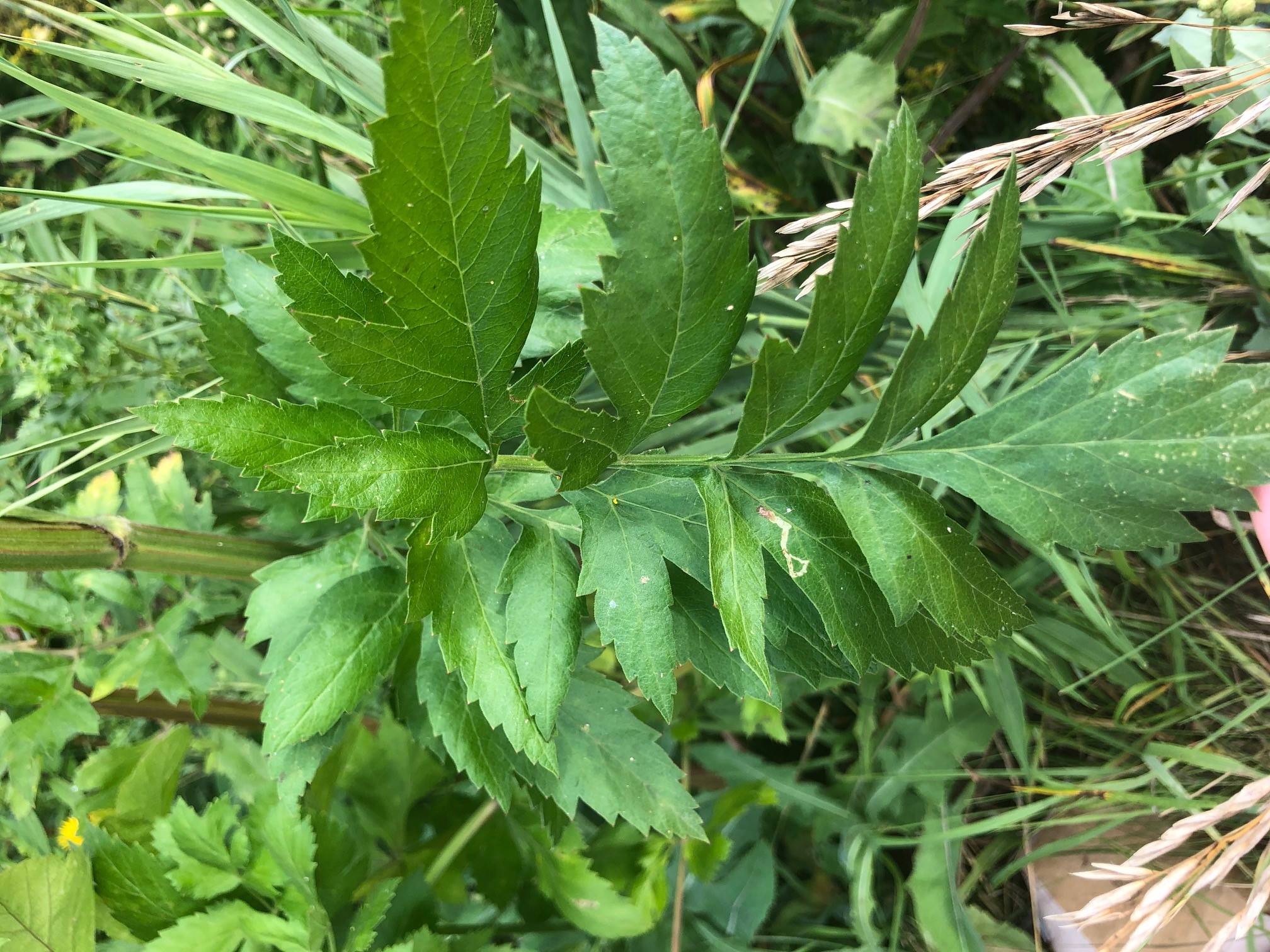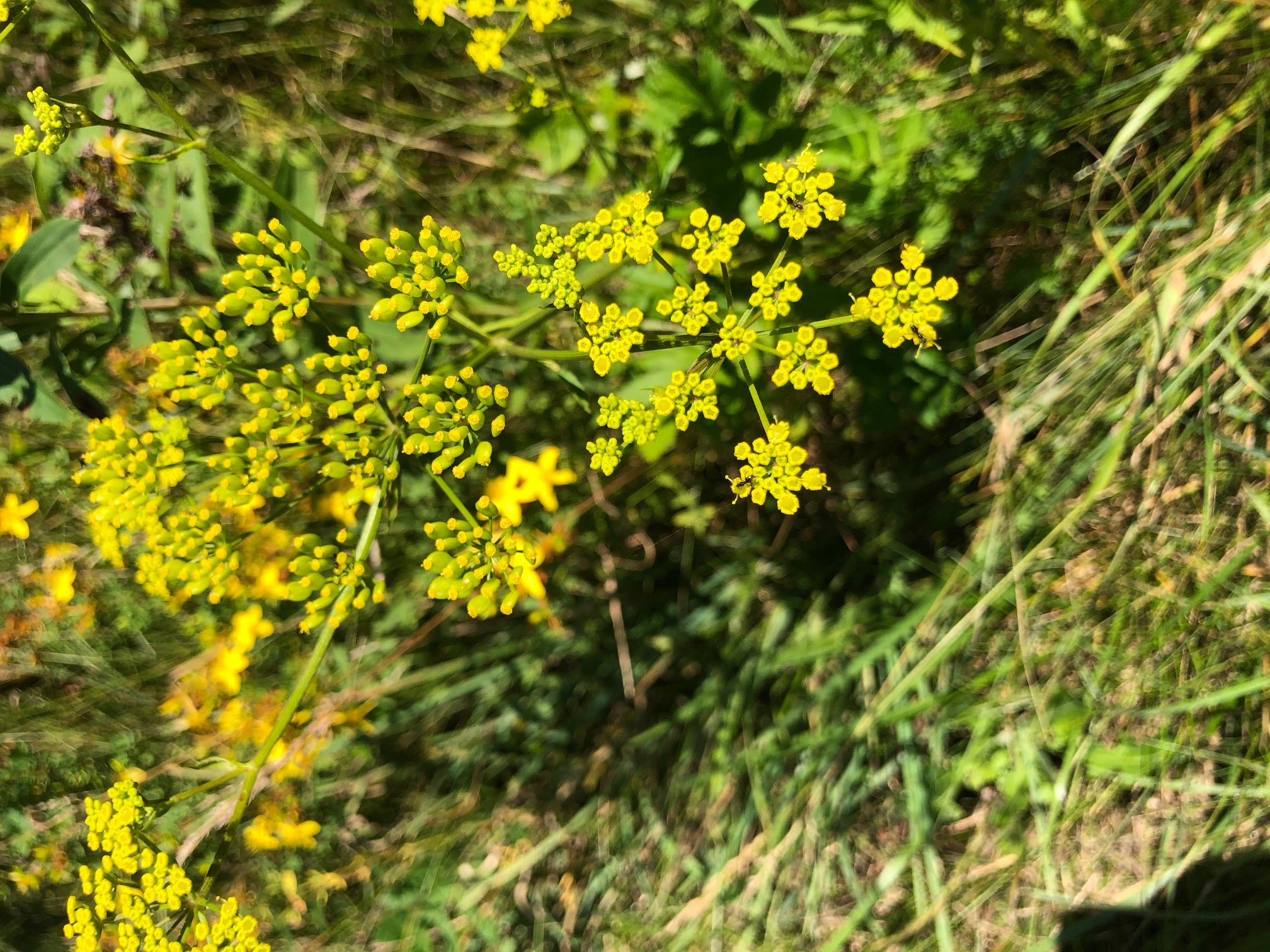
Wild Parsnip - Pastinaca sativa
Wild Parsnip – Pastinaca sativa
Apiaceae (Carrot family)
MI Status
Non-native
Life Cycle
Biennial/Perennial
Leaves
Leaves emerge and form a rosette. They are compound and branched with cleft lobes and coarsely toothed margins. The lower leaves on the plant have longer petioles while the upper leaves have very short or no petioles.
Stems
Stems will develop from the rosette in the second year of growth. They are grooved and hollow except at the nodes. Leaves along the stem are alternate.
Flowers and fruit
Small yellow 5 petal flowers are arranged in a compound flat-topped umbrel. Parsnip flowers from late spring to mid-summer. Each flower will be replaced by a schizocarp containing a single seed. The seeds are round to oval, flat and slightly ribbed with narrow wings.
Reproduction
Seeds that can remain viable in the soil for several years.
Toxicity
This plant produces sap in its leaves, stems, flowers, and fruit that causes photodermatitis, a severe skin reaction. Exposed skin will become sensitive to sunlight and may result in severe blistering, rash, localized burning, and discoloration. This type of reaction occurs only by contact with the sap. If skin exposure occurs wash immediately with soap and water and keep covered out of direct sunlight.

.jpg?language_id=1)
.jpg?language_id=1)

.jpg?language_id=1)
.jpg?language_id=1)
.jpg?language_id=1)



 Print
Print Email
Email




